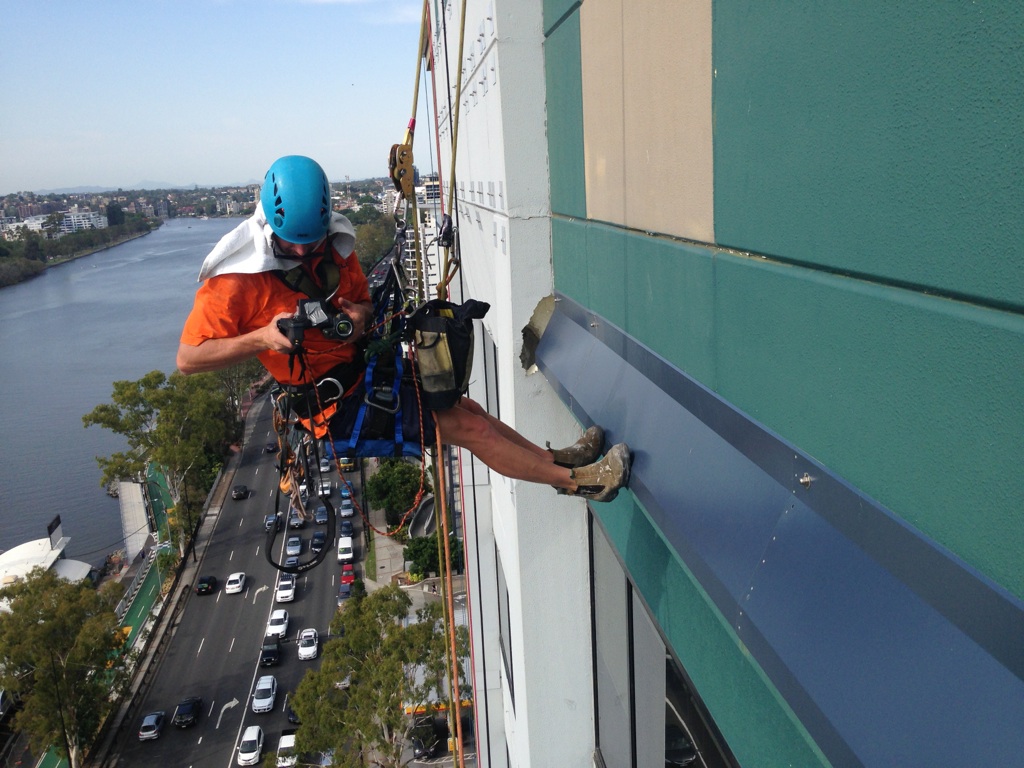Why does concrete fail?
Managing a high rise concrete building is a task that comes with corrosion related problems, over time concrete can develop unsightly minor and potentially dangerous major issues. Staying on top of concrete repair and high rise joint sealing may assist you in avoiding a costly mess. Here is some typical corrosion related deterioration to look out for:
Concrete Spalling (Cancer)
Water ingress causes concrete cancer, a process in which the reinforcing steel inside of the concrete, comes in contact with moisture or Carbon Dioxide, slowly corroding and expanding. The expansion puts unintended pressure on the concrete from inside the slab, eventually causing it to crack and break away. This can serve as a risk to the unsuspecting public passing below.


Unsealed or Failing Concrete Joints
High rise joint sealing ensures all of the joints in a concrete pavement are sealed to prevent water or non-compressible matter from infiltrating. Unsealed concrete joints are at risk of water entering joints which can dramatically shorten the durability of concrete, allowing it to soften and become unstable while, non-compressible matter fill up joints and shift stress to pain points in the slab, potentially leading to cracking.
Compliance Considerations
All buildings in Australia are subject to The Building Code of Australia 1996 (BCA96). BCA96 is a comprehensive statement of technical requirements for the design and construction of buildings and other specified structures. It is produced by the Australian Building Codes Board (“ABCB”) on behalf of the Commonwealth and State/Territory Governments, and also dictates requirements for building owners and managers.
The code states in relation to Building Facades or Curtain Walls, that an inspection every 5 years for defects likely to cause failure resulting in injury to people must be undertaken. The guideline for inspections can be viewed here.

What to do about it?
Early detection is important for both concrete cancer and unsealed concrete joints if left unattended.
The damage can move from being simply unsightly to endangering the integrity of a building and the safety of public in the vicinity of the building. Ideally a full building scan using thermographic (IR) cameras should be incorporated with your other routine maintenance to provide a quality cost effective result.
Treatment needs to be done by qualified professionals, generally, rope access providers can offer concrete repair and high rise joint sealing without the need for expensive and intrusive cradles or scaffolding. Where necessary, waterproofing after a concrete repair and high rise joint sealing is best practice.



